When knitting children's clothing are of great importance to the color of thread. Beautiful knitted baby clothes of the brightest colors of yarn gives the child a good mood. More free, not constraining movements, styles feature children's clothing from adult.
Getting to the manufacture of children clothes, one must know the sequence of manufacturing its parts and the whole work process.
2. HOW TO TAKE INTO ACCOUNT FEATURES OF THE FIGURE
In the book we give baby clothes, so consider the peculiarities of children's physique.
The figure of the child changes with age. With the rapid growth disrupts the proportions of the body relative to accepted standards: excessively long torso, short legs, long neck, broad shoulders, etc. in addition, unfortunately, there are inherent flaws.
To correct the pathology of our book will not help you, but the correct cut will hide most of the shortcomings of the Constitution of your body.
Give a few tips on the selection of models for people with a disproportionate figure (more on this you can read in our next books).
With low growth and fullness, you should not get the product horizontal stripes, viscous with a large pattern and a wide ornament, it is better to use a vertical line, elongating the figure;
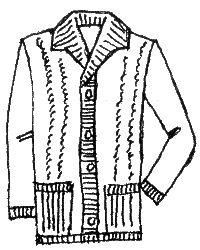
Figure 371.
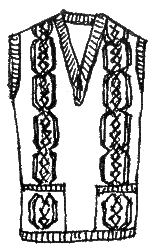
Figure 372.
Narrow hips can be increased by applying a convex relief patterns, large crocheted ornament, colored broad stripes and patch pockets;
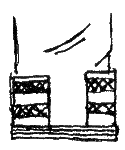
Figure 373.
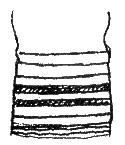
Figure 374.
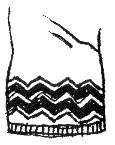
Figure 375.
To hide wide hips, choose a model with a vertical pattern and Welt pockets;
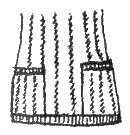
Figure 376.
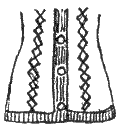
Figure 377.
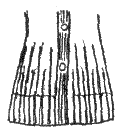
Figure 378.
Slouching can hide vyazaniem yoke, made of vertical relief pattern or model where you apply the sleeve with the shoulder strap and offset shoulder seam in the back side;
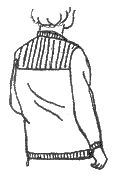
Figure 379.
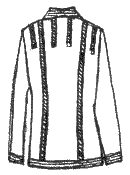
Figure 380.
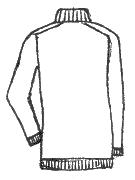
Figure 381.
Narrow sloping shoulders expandable large collar or yoke, knitted colored stripes, or made in the form of angle pattern relief;
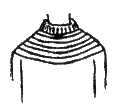
Figure 382.
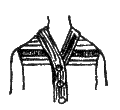
Figure 383.
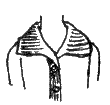
Figure 384.
Round straight shoulders can be a Raglan sleeve with a shoulder strap;
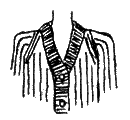
Figure 385.
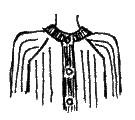
Figure 386.
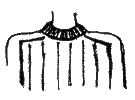
Figure 387.
With a long outstretched neck are advised to wear models with collars-racks, collars zelenovatye neck and neck with "boat";
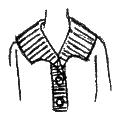
Figure 388.
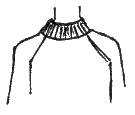
Figure 389.
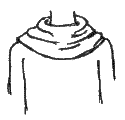
Figure 390.
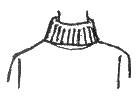
Figure 391.
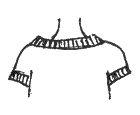
Figure 392.
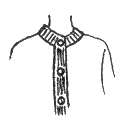
Figure 393.
If you have a short neck, avoid high collars and cutouts "quads." They visually shorten the neck. Use low collars and collars with lisoobrobna neck.
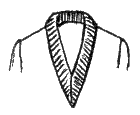
Figure 394.
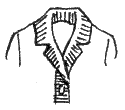
Figure 395.
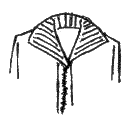
Figure 396.
Remember that when drafting patterns is not only important to take correct measurements, but also to determine body type. And on this basis to choose a model for knitting.
3. TAKING MEASUREMENTS
Taking measurements, observe the following rules:
belting the figure at the waist slightly tight braid;
taking measurements with measuring tape, tighten it a little, as knitted clothing is stretched in width;
all measurements of the circumference are recorded in half-size.
Measurements are taken as follows (figures 397, 398).
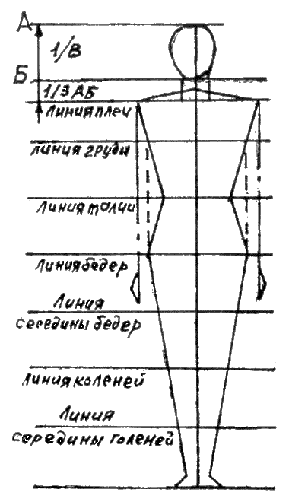
Figure 397. A breakdown of the figure for the line measurements
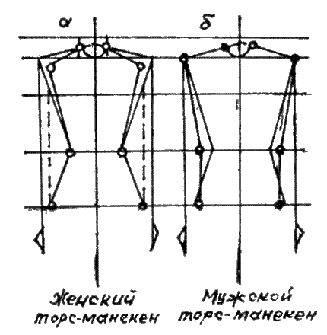
Figure 398. Features of the lines measured on female and male figures
1. The circumference of the neck at the base of the neck to mid-cervical depression (the jugular cavity) (figure 399).
2. The circumference of the chest at the outermost points of the chest and shoulder blades (this measurement is involved in almost all calculations, the tape must lie flat). Half of the measurements defines the size of the garment (figure 400).
3. Distance from hoist to the top of the hips - measure from the waist line to the line passing through the widest part of the buttocks (figure 401).
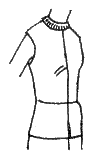
Figure 399. Neck circumference
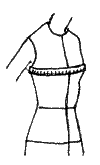
Figure 400. The circumference of the chest
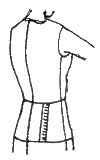
Figure 401. Distance from the waist to the hip line
If the figure with thickened flared hips (like breeches), measured from waist line to the line running along the highest points of the "breeches" (figure 402).
4. The circumference of the hips (About) - measure at the hip line, taking account of the protrusion of the abdomen (figure 403).
For the shape with the shape of the thighs of saddlebags removed additional measurements: circumference at the thigh line, the most protruding points "breeches" (figure 404). From these measurements, choose large.
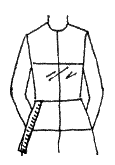
Figure 402. Removing the measurements on the figure with thick thighs
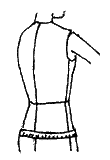
Figure 403. The circumference of their hips
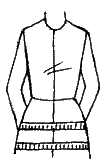
Figure 404. Taking measurements on the figure with the shape of the hips "breeches"
5. Back length to the waist line this measure consists of two things: 1 - from the seventh cervical vertebra to the waist (figure 405); 2-from the waist to the line side (figure 406).
When you run things on normal the figure you need to know how it will wear (skirt or pants).
6. Shoulder length (DP) - measure from the base of the neck on the shoulder line to the line of openings (see figure 407). If broad shoulders, you reduce the shoulder length on 1-1,5 see If the shoulders are narrow, then the measure is increased by 1-1,5 see
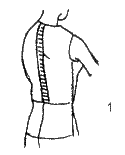
Figure 405. Back length to waist
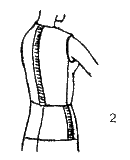
Figure 406. Measurement from the waist to the hip line
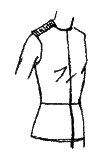
Figure 407. Shoulder length
7. Arm length (PD) - measure from end of shoulder to the base of the brush, the arm needs to be lowered (figure 408).
8. Wrist circumference (Oz) - measure from the base of the brush in a circle hand (figure 409).
9. Arm circumference at the shoulder is measured at freely lowered hand at the level of the armpit (figure 410).
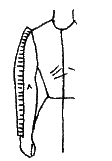
Figure 408.
Arm length
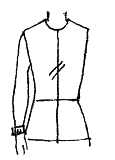
Figure 409.
Wrist circumference
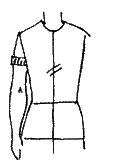
Figure 410.
Arm circumference at the shoulder
10. Shoulder width (SHS) - is measured on the blades between the rear corners of the armpits (figure 411).
11. The width of the front (SHP) is measured under the bust from one hand to the other on lines extending approximately 5-6 cm from the jugular depression (figure 412).
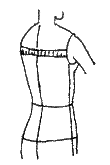
Figure 411. Back width.

Figure 412. The width of the front
4. USEFUL TIPS
The color scheme of the product, as the style hides the flaws of the figure.
Dark colors preferable to full and light - more slender



